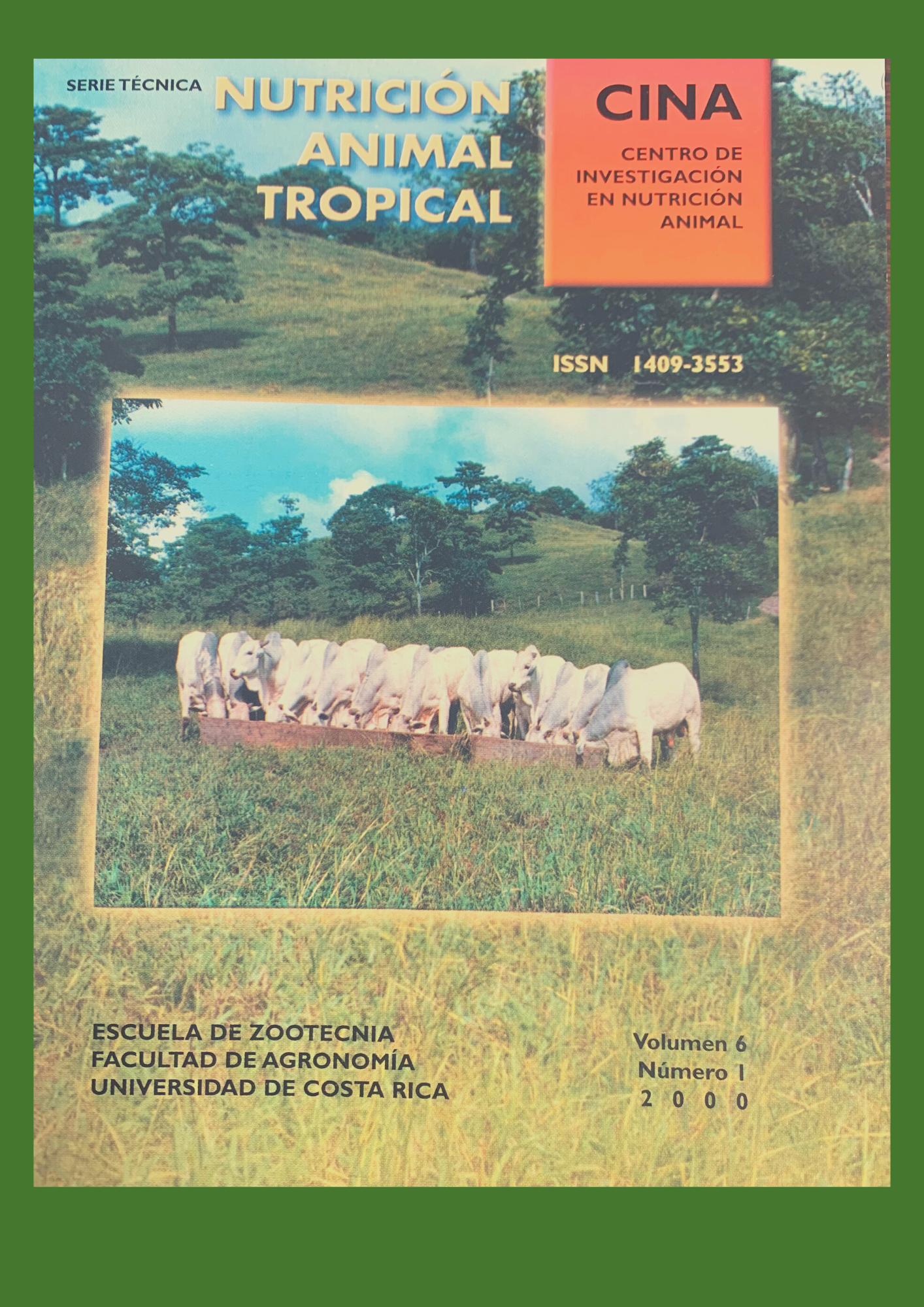Resumen
Hypomagnesemia. A metabolic imbalance underestimated in dairy herds in Costa Rica. A review. Hypomagnesemia is a metabolic disorder characterized by a reduction in blood and cerebrospinal fluids magnesium levels, affecting the central nervous system. Hypomagnesemic tetany mainly affects old and high producing cows and incidence can reach epidemic proportions. When magnesium levels drop between 1.8 to 1.1 mgl100 ml, the metabolic imbalance is considered moderate and the animal reduces feed intake, is nervous and milk fat synthesis and total milk production are reduced. This condition predisposes to milk fever. If magnesium levels fall below 1.1 mg/100 ml neuromuscular function is affected and the animals show tetanic spams of the muscules and usually lay with the head arched back and the legs paddling. The eyelids flutter and there is nystagmus. If animals are not treated immediately mortality is high. The most effective treatment for the hypomagnesemic cow is the 500 ml injection of a solution of calcium borogluconate (8 to 10 g calcium) and magnesium borogluconate (1.5 to 4 g of magnesium). Injections should be administered slow and intravenously. To prevent relapses is recommended the subcutaneous injection of L00 to 200 ml of a 20 to 50% magnesium sulfate solution. Since no hormonal mechanisms are in charge of keeping the magnesium homeostasis in the organism, the mineral should be always supplied in the diet of the animals in order to maintain the normal plasma levels (1.8 to 2.4mg/1OO ml). Magnesium level in the dairy cattle diet should be 0.25% of dry matter when the K:(Ca+Mg) ratio is below 2.2.If this relationship is higher the level of the element should be increased to 0.30%. Magnesium absorption in the rumen epithelium depends on the concentration of magnesium in solution in the rumen fluid and the activity of the magnesium transport mechanism, which is related to sodium. Among factors affecting the concentration of magnesium in solution in the rumen fluid are the amount of this mineral in the diet, rumen pH and the concentration of unsaturated fatty acids in the forages. Magnesium transport across the rumen epithelium is affected by the sodium: potassium ratio in the diet, as well as the ingestion of lush high moisture pastures, which increases the rate of passage of feed from the rumen, reducing the absorption of magnesium. Most of the forages in the Humid Tropics and the Highlands of Costa Rica have conditions that predispose cows to suffer hypomagnemia. Moreover, most of the soils in these areas ale magnesium deficient (less than 1 mgl100 ml of soil). In those dairy herds where this imbalance is a problem, it is recommended to increase magnesium intake through drinking

